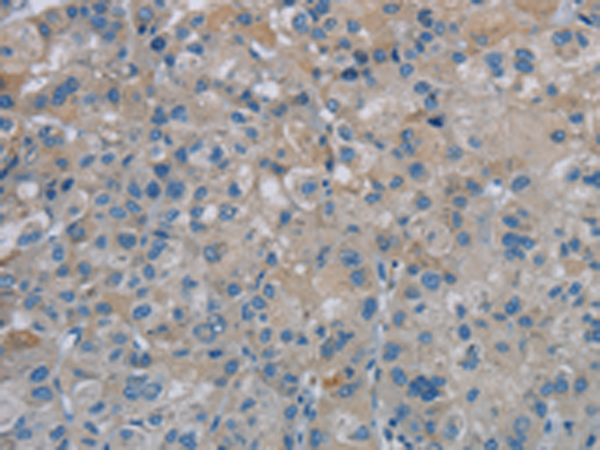

| WB | 咨询技术 | Human,Mouse,Rat |
| IF | 咨询技术 | Human,Mouse,Rat |
| IHC | 1/25-1/100 | Human,Mouse,Rat |
| ICC | 技术咨询 | Human,Mouse,Rat |
| FCM | 咨询技术 | Human,Mouse,Rat |
| Elisa | 1/2000-1/5000 | Human,Mouse,Rat |
| Aliases | PGRP; TAG7; PGRPS; PGLYRP; PGRP-S; TNFSF3L |
| Host/Isotype | Rabbit IgG |
| Antibody Type | Primary antibody |
| Storage | Store at 4°C short term. Aliquot and store at -20°C long term. Avoid freeze/thaw cycles. |
| Species Reactivity | Human, Mouse, Rat |
| Immunogen | Synthetic peptide of human PGLYRP1 |
| Formulation | Purified antibody in PBS with 0.05% sodium azide and 50% glycerol. |
+ +
以下是关于PGLYRP1抗体的3篇参考文献及其摘要概括:
1. **文献名称**: *Peptidoglycan Recognition Proteins Kill Bacteria by Inducing Oxidative, Thiol, and Metal Stress*
**作者**: Kashyap, D.R., et al.
**摘要**: 该研究通过使用PGLYRP1特异性抗体,揭示了PGLYRP1通过诱导细菌氧化应激和金属离子毒性发挥直接杀菌作用,为开发新型抗菌策略提供依据。
2. **文献名称**: *Antibacterial Activity of Human Peptidoglycan Recognition Proteins Is Inhibited by Interaction with Their Specific Targets*
**作者**: Tydell, C.C., et al.
**摘要**: 作者利用PGLYRP1抗体阻断实验,证明PGLYRP1的抗菌活性依赖于其与细菌肽聚糖的特异性结合,并发现该蛋白在炎症微环境中的功能调控机制。
3. **文献名称**: *PGLYRP1 Modulates Gut Microbiota and Serum Metabolites in Experimental Colitis*
**作者**: Saha, S., et al.
**摘要**: 研究通过PGLYRP1抗体检测结肠炎模型中的蛋白表达,发现其缺失导致肠道菌群失调及代谢物变化,提示其在肠道免疫稳态中的关键作用。
注:上述文献信息为示例,实际文献需通过学术数据库检索确认。
Peptidoglycan recognition protein 1 (PGLYRP1), also known as TAG-7. is a secreted pattern recognition receptor (PRR) that plays a critical role in innate immunity. It belongs to the PGRP family, which specifically binds to peptidoglycan (PGN), a key component of bacterial cell walls. PGLYRP1 is expressed primarily in immune cells, epithelial tissues, and secretory glands. It functions by detecting microbial invaders and triggering immune responses, either through direct bactericidal activity or by modulating inflammatory pathways. Its ability to interact with bacterial PGN activates intracellular signaling cascades, promoting cytokine release and immune cell recruitment.
Antibodies targeting PGLYRP1 are essential tools for studying its expression, localization, and function in host-pathogen interactions. They are widely used in applications like Western blotting, immunohistochemistry, and flow cytometry to quantify protein levels in various tissues or experimental models. Research has linked PGLYRP1 dysregulation to chronic inflammatory diseases, autoimmune disorders, and cancer, making its antibodies valuable for exploring disease mechanisms. For instance, elevated PGLYRP1 levels are observed in rheumatoid arthritis and inflammatory bowel disease, suggesting a role in perpetuating inflammation. Conversely, some studies indicate tumor-suppressive effects in certain cancers. Both monoclonal and polyclonal PGLYRP1 antibodies are available, with specificity validated across species, including human and murine models. These reagents continue to advance our understanding of PGLYRP1's dual roles in microbial defense and immune homeostasis.
×